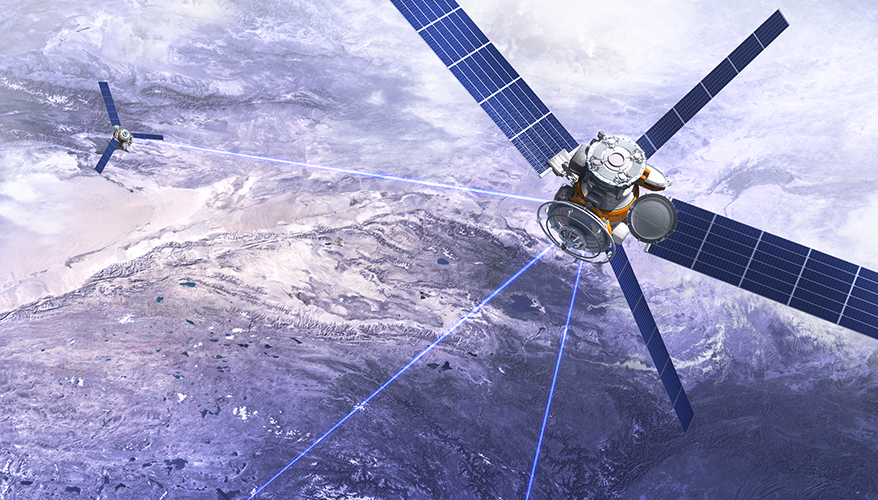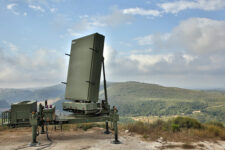
Optical links will connect SDA’s Transport Layer to weapons platforms. SDA image
WASHINGTON: The Space Development Agency (SDA) hopes to tap into the technical prowess of cable companies and traditional terrestrial communications firms using fiber optics to improve space-based laser communications on its next set of data relay satellites, being developed to underpin Joint All Domain Command and Control (JADC2), says Director Derek Tournear.
“We really need to look at the optical comm standard, and say: ‘What is industry doing terrestrially that we can leverage?,” he told the 2021 C4ISRNET conference Wednesday.
Of course, he added, putting laser links on satellites is a fundamentally different challenge than using fiber optic cables. Satellites in LEO move incredibly fast — which makes aligning the laser beams with receivers a challenge.
The Transport Layer is being designed to form a ‘mesh network’ of communications/data relay satellites, linking all DoD command and control networks, to enable JADC2. The Transport Layer also will link to both new and legacy weapon systems across all domains — thus making possible JADC2’s sensors-to-shooters concept.
SDA is currently working to put up its first 28 satellites next year, known as Tranche 0. The Tranche 0 program includes 20 Transport Layer satellites and eight Tracking Layer missile warning and tracking sats. With Tranche 0, SDA hopes to demonstrate the constellations basics: the capability for the satellites to ‘talk to’ ground stations and each other; and for the Tracking Layer to find and follow missile tracks.
Tranche 1, however, will only include Transport Layer satellites, to be on orbit by late 2024. Those 150 satellites will be configured differently than those in Tranche 0 in order to provide real-world capabilities to the warfighter.
“Tranche 1 will be an operational system,” Tournear said. “That’s our initial warfighting capability.”
The optical links will provide both inter-satellite communications for SDA’s constellations and, in future, communications from the individual satellites to terrestrial receivers. (The first SDA satellites will use the venerable Link 16 radio link to ‘talk to’ weapons platforms such as fighters and Navy warships.) Indeed, Tournear has repeatedly said that optical comms is the crucial technology to making the entire SDA planned architecture work.
Tournear said Wednesday that SDA is eyeing equipping each of the Tranche 1 Transport Layer satellites with “something on the order of three to five optical cross links per satellite.” Further, he said, “we want those cross links to not only be satellite-to-satellite, but satellite-to-air, satellite-to-ground and satellite-to- … maritime assets.”
The new optical communications payloads also would need to be able to back-link to Tranche 0 sats, Tournear noted, which will be equipped with prototype optical cross-links. Those prototypes, he said, in essence represent “a least common denominator of all of the different optical standards out there.”
SDA in June intends to launch prototypes of the Tranche 0 optical systems, being built by SA Photonics and General Atomics.
Interested companies have until April 30 to submit concepts for the new Tranche 1 payloads to SDA under a request for information (RFI) just updated yesterday. The RFI says:
“SDA expects the T1TL constellation to feature 6 near-polar circular planes with tens of satellites at 1000 km altitude in each plane. Unlike in Tranche 0, SDA is interested in deploying a homogeneous constellation design, with all space vehicles equipped with baseline mission payloads, and is seeking feedback on industry capability to design and develop these integrated space vehicles.”






















